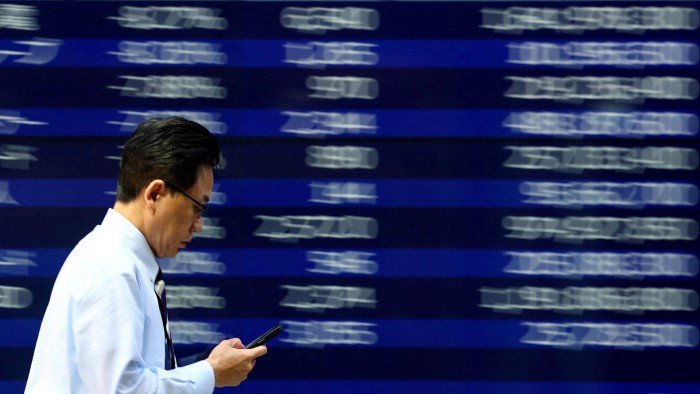Fiscal sustainability has come back into view, with Moody’s scrapping the AAA rating for US government debt and moving in line with the other big credit rating agencies. A weak auction for 20-year Treasury bonds this week has added to concerns about the attractiveness of US debt.
We also got a pretty good idea of what Donald Trump’s final budget plans will look like: the One Big Beautiful Bill made its way through the House of Representatives and is on its way to the Senate for the next stage of the reconciliation process.
With tax cuts at the core of the legislation, the bill looks like it will add between $2tn and $5tn to the deficit over the next decade. Bond markets reacted accordingly, pushing the 30-year Treasury yield above 5 per cent for the first time since 2023.
Highlights of the week
A relatively quiet week on the data front gave us time to update our central bank scenarios with new developments over the past month. The most significant of these is the break in the trade war that led to a 90-day reprieve between the US and China. For the Federal Reserve we think this changes things at the tails of the potential path for rates; the chances of a recession are now lower, as is the potential for another nasty bout of higher inflation.
We do not however think it will change the prevailing attitude at the US central bank, which we expect will continue to watch, wait and keep rates on hold for the rest of this year. With lower stagflationary risks, however, we are less certain of this outcome and think if the Fed now has a higher chance of continuing to normalise with cuts towards the end of the year.
Key to whether that outcome materialises is how inflationary tariffs actually prove to be. April’s inflation data surprised to the downside but be assured price rises are coming. Chris Giles this week asked: who is going to pay for them? Businesses are being quite clear that the answer is US consumers. Retail giant Walmart has already warned of price hikes, as has toy maker Mattel and sports giant Nike. Exporters meanwhile are not absorbing the tariff hit, with no signs that import prices excluding tariffs are trending lower.
The other side of the equation for the Fed is growth, and given the importance of the US economy, this is also a question for the rest of the world. Joel Suss shone a positive light on the state of the global economy with an analytical look at global sentiment. His new ‘macro mood’ index generated from FT content reflects that the vibe has improved since tariff deals started to arrive. He will be adding the index to our suite of data tools, which can be found on the MPR site here.
The trade war truce will also help the European Central Bank which opted for a quite dovish shift in language at its last meeting in April. The ECB is now less likely to follow through with faster easing this year and we think just two more cuts is appropriate. As minutes from the April meeting revealed, however, there is also still quite a bit of concern around the potential longer term impact of tariffs on inflation and we expect a pause in cuts to arrive in July.
The same sentiment towards inflation at the Bank of England is even greater. Fears that will have been compounded by April’s inflation data, which showed the headline inflation rate jumped to 3.5 per cent last month. An increase was expected from higher utility bills and taxes but other one off factors added to the reading.
We do not think the data by itself is enough to derail the BoE’s current quarterly pace of cuts. But our expectation of an additional cut on top in the second half of this year has become more uncertain. While we still think it will happen, we will need to see inflation and more importantly wage growth slow in the coming months.
Japanese inflation was also above expectations in April, with the core measure that excludes fresh food coming in at 3.5 per cent. Pushed higher by rice and electricity prices, we do not think the reading will spur the Bank of Japan to act: services inflation remained notably muted in April, and think that if the BoJ does move it will hike at the end of the year once the picture on inflation and trade has become clearer.
Chart of the week
US bond markets are not the only ones feeling the heat from fiscal sustainability fears. The weakest demand at a Japanese debt auction since 2012 sent yields on long dated bonds sharply higher in recent days.
The yield on the 40-year bond is at record highs of more than 3 per cent. Yields on the 30-year bond are not far off records.
The Bank of Japan is in a difficult position where it is unable to raise rates to offset inflation while continuing to allow its holdings of JGBs to come into the market and adding to supply concerns.
Highlights of the coming week
Minutes from the Fed’s May meeting are out on Wednesday. We will be looking for any clues as to which side of the stagflationary equation the US economy is facing is more pronounced in the policy committee.
On Friday we get US personal consumption spending data for April and potential further evidence that US consumers are holding back in the wake of tariffs.


